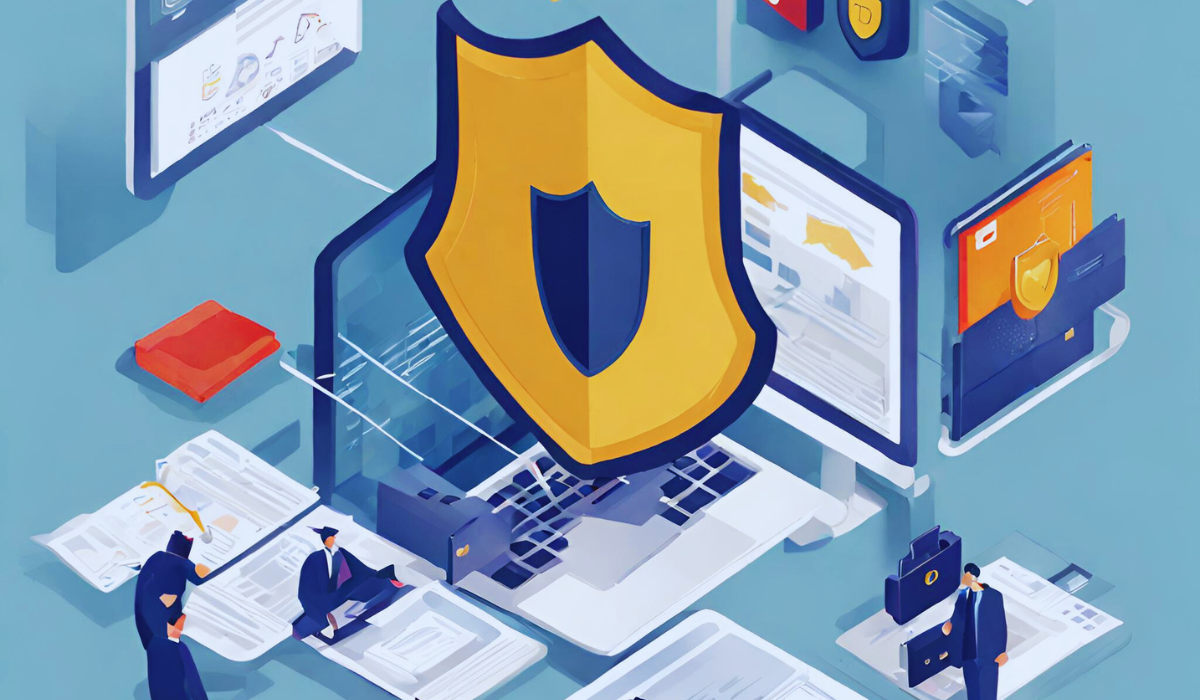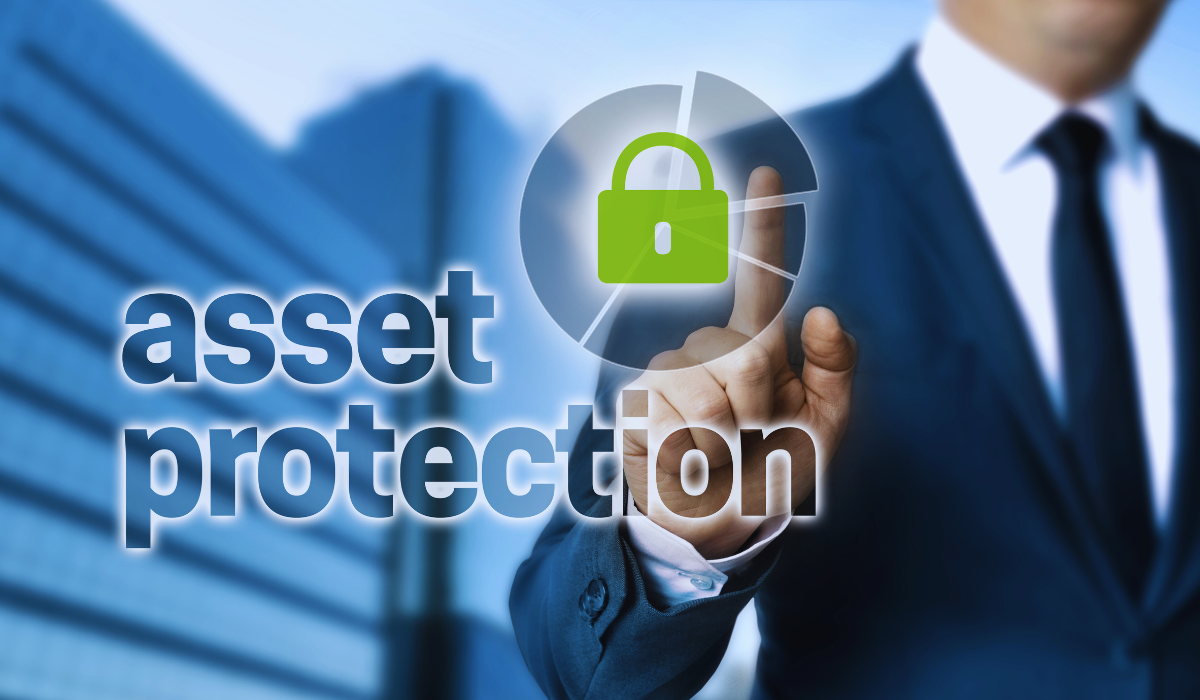The security term that refers to a company’s valuable assets is “Asset Protection” or “Asset Security.
In the world of business, security plays a crucial role in protecting a company’s valuable assets. Understanding the concept of security and its significance in safeguarding these assets is essential for any organization. I will shed light on different types of security measures and highlight the connection between security terms and company assets.
Understanding the Concept of Security in Business

The Importance of Security in Protecting Company Assets
Security is not merely a buzzword; it is a vital aspect of any modern business. The protection of company assets is of utmost importance, as these assets directly contribute to the success and growth of the organization. Valuable assets can include tangible items such as physical premises, equipment, and inventory, as well as intangible assets like intellectual property, sensitive data, and trade secrets.
When it comes to safeguarding physical premises, businesses employ various security measures to ensure the safety of their assets. These measures can include state-of-the-art alarm systems that are monitored 24/7, surveillance cameras strategically placed to cover all areas, access controls that restrict entry to authorized personnel only, and trained security personnel who are vigilant in maintaining a secure environment.
Furthermore, businesses recognize the importance of protecting their digital assets in today’s technology-driven world. Cybersecurity measures play a crucial role in safeguarding sensitive information and preventing unauthorized access. Companies invest in robust firewalls that act as a barrier between their internal networks and external threats. Encryption protocols are implemented to ensure that data transmitted over networks remains secure and confidential. Additionally, companies employ multi-factor authentication mechanisms to strengthen access controls and prevent unauthorized individuals from gaining entry into their digital systems.
However, security in business goes beyond physical and digital measures. Personnel security is another critical aspect that organizations focus on. Conducting thorough background checks on employees helps ensure their trustworthiness and reduces the risk of internal threats. By verifying the credentials and history of potential employees, businesses can make informed decisions about whom they allow access to their assets and sensitive information.
Different Types of Security Measures in Business
When it comes to implementing security measures, businesses have multiple options at their disposal. Physical security measures involve securing premises with alarms, surveillance systems, access controls, and trained security personnel. Cybersecurity measures focus on protecting digital assets by implementing firewalls, encryption protocols, and robust authentication mechanisms. Additionally, companies can employ personnel security, which entails conducting thorough background checks on employees to ensure their trustworthiness.
Investing in comprehensive security measures not only protects a business’s assets but also instills confidence in stakeholders, including customers, investors, and partners. It demonstrates a commitment to maintaining a secure environment and safeguarding sensitive information. By prioritizing security, businesses can mitigate risks, prevent potential losses, and ensure the continuity of their operations.
Defining Valuable Assets in a Company
When it comes to running a successful company, it is crucial to understand the concept of valuable assets. Valuable assets can be broadly categorized into two types: tangible and intangible assets. Let’s take a closer look at each of these categories.
Tangible Assets: The Foundation of a Company
Tangible assets are physical items that hold a definite monetary value. These assets provide immediate utility to the organization and are essential for its day-to-day operations. Examples of tangible assets include buildings, machinery, inventory, and cash reserves.
Buildings serve as the physical space where a company conducts its operations. They provide a secure and functional environment for employees to work in. Machinery, on the other hand, plays a crucial role in the production processes of a company. It enables efficient manufacturing and helps meet customer demands.
Inventory is another tangible asset that companies rely on. It represents the goods and materials that a company holds for sale or use in its operations. Proper management of inventory ensures that a company can meet customer demands promptly and avoid stockouts or overstocking.
Cash reserves, although intangible in nature, are also considered tangible assets. They provide a financial cushion for the company, allowing it to cover unexpected expenses or invest in growth opportunities.
Intangible Assets: The Hidden Gems
While tangible assets are easily identifiable, intangible assets are less tangible but equally valuable. These assets have no physical presence but play a significant role in a company’s success. Examples of intangible assets include patents, copyrights, trademarks, brand reputation, customer databases, and proprietary software.
Patents, for instance, protect a company’s inventions or innovations, giving it exclusive rights to use and profit from them. Copyrights, on the other hand, safeguard original works of authorship, such as books, music, or software code. Trademarks, on the other hand, protect a company’s brand identity, ensuring that its products or services are easily recognizable in the market.
Brand reputation is another valuable intangible asset. It represents the perception and trust that customers have in a company’s products or services. A strong brand reputation can attract new customers, foster loyalty, and differentiate a company from its competitors.
Customer databases are also considered intangible assets. They contain valuable information about a company’s customers, such as their preferences, purchase history, and contact details. This data can be leveraged to personalize marketing efforts, improve customer service, and drive customer retention.
Proprietary software is another intangible asset that can provide a competitive advantage. It refers to software programs or applications that are developed and owned by a company. Such software can streamline internal processes, enhance productivity, and enable unique features or functionalities.
The Role of Assets in a Company’s Success
Assets, whether tangible or intangible, play a vital role in determining a company’s success. Tangible assets facilitate operations and support production processes, ensuring smooth and efficient business operations. Without these assets, a company may struggle to deliver products or services to its customers.
Intangible assets, on the other hand, contribute to creating a competitive advantage for a company. They help differentiate a company from its competitors, attract customers, and generate revenue. For example, a strong brand reputation can make customers choose one company’s products over another’s, even if the prices are similar.
Protecting these valuable assets is paramount to sustaining the organization’s growth and ensuring long-term success. Companies invest significant resources in safeguarding their tangible and intangible assets. This includes implementing security measures, obtaining legal protections, and developing strategies to maintain and enhance the value of these assets.
In conclusion, understanding and managing valuable assets is crucial for any company’s success. Tangible assets provide the foundation for operations, while intangible assets contribute to creating a competitive advantage. By recognizing the importance of these assets and implementing effective asset management strategies, companies can position themselves for long-term growth and prosperity.
Introduction to Security Terms in Business
Common Security Terms and Their Meanings
Understanding the various security terms used in the business domain is essential for effective asset protection. Terms such as risk assessment, threat management, intrusion detection, access control, and incident response are crucial in creating a secure environment. A risk assessment involves identifying potential vulnerabilities and assessing the likelihood and impact of specific threats. Threat management focuses on proactively mitigating risks, while intrusion detection systems help identify unauthorized access attempts.
How Security Terms Apply to Business Assets
Applying security terms to business assets involves aligning protective measures with the specific threats faced by the organization. Access control systems, for instance, limit entry to authorized individuals, reducing the risk of theft or unauthorized activities. Incident response protocols outline the steps to be taken in case of a security breach, ensuring swift and efficient actions to minimize damage and prevent future incidents.
The Connection Between Security Terms and Company Assets
The Role of Security Terms in Asset Protection
Security terms act as a foundation for asset protection strategies. By clearly defining and understanding these terms, organizations can develop comprehensive security protocols tailored to their specific needs. Effective asset protection involves integrating security measures seamlessly, creating a layered defense system that addresses potential vulnerabilities at every level.
The Impact of Security Terms on Asset Management
Security terms not only impact asset protection but also have a direct influence on asset management. With the right security measures in place, companies can securely manage and track their valuable assets throughout their lifecycle. Asset management systems utilize security terms to monitor asset utilization, ensure compliance with regulations, and facilitate maintenance, reducing the risk of loss, theft, or unauthorized access.
Implementing Security Measures for Asset Protection

Best Practices for Protecting Company Assets
When it comes to protecting company assets, some best practices can significantly enhance security measures. Regular security audits or risk assessments help identify vulnerabilities and ensure continuous improvement. Employee training programs on security awareness and safe practices enhance the organization’s overall security posture. Implementing robust data backup and disaster recovery mechanisms ensures business continuity even in the face of unforeseen events.
The Future of Asset Protection: Emerging Trends and Innovations
The world of asset protection is constantly evolving to adapt to new threats and challenges. Emerging technologies like artificial intelligence, machine learning, and blockchain are being leveraged to enhance security measures. AI-powered surveillance systems can detect and respond to security incidents in real time, while blockchain technology provides tamper-proof, transparent records of asset ownership and transactions.
FAQs
What are tangible assets in a company?
Tangible assets are physical items that hold a definite monetary value, such as buildings, machinery, inventory, and cash reserves.
How are intangible assets different from tangible assets?
Intangible assets have no physical presence but play a significant role in a company’s success. Examples include patents, trademarks, brand reputation, and customer databases.
Why is cybersecurity essential for modern businesses?
Cybersecurity measures are vital to safeguard sensitive information, prevent unauthorized access, and ensure the integrity of digital operations.
What is the significance of personnel security in asset protection?
Personnel security ensures the trustworthiness of employees, reduces internal threats, and ensures that only authorized individuals have access to company assets.
How do emerging technologies like AI and blockchain influence asset protection?
AI-powered surveillance systems can detect and respond to security incidents in real time, and blockchain provides tamper-proof, transparent records of asset ownership and transactions.
Key Takeaways
- Assets are Crucial: Both tangible and intangible assets are vital for a company’s success. Tangible assets support operations, while intangible assets create competitive advantages.
- Comprehensive Security: Companies must focus on physical, digital, and personnel security measures to protect their assets comprehensively.
- Asset Management: Proper asset management ensures that valuable resources are used efficiently, maintained, and protected against potential threats.
- Evolution of Asset Protection: The world of asset protection continuously adapts to emerging threats, leveraging new technologies like AI and blockchain for enhanced security.
- The Significance of Security Terms: Security terms, such as risk assessment and intrusion detection, lay the foundation for effective asset protection strategies.
Conclusion
In conclusion, security terms play a crucial role in protecting a company’s valuable assets. By understanding the concept of security, defining valuable assets, being familiar with security terms, and implementing the right security measures, businesses can mitigate risks, safeguard their assets, and ensure long-term success in today’s ever-evolving landscape.
